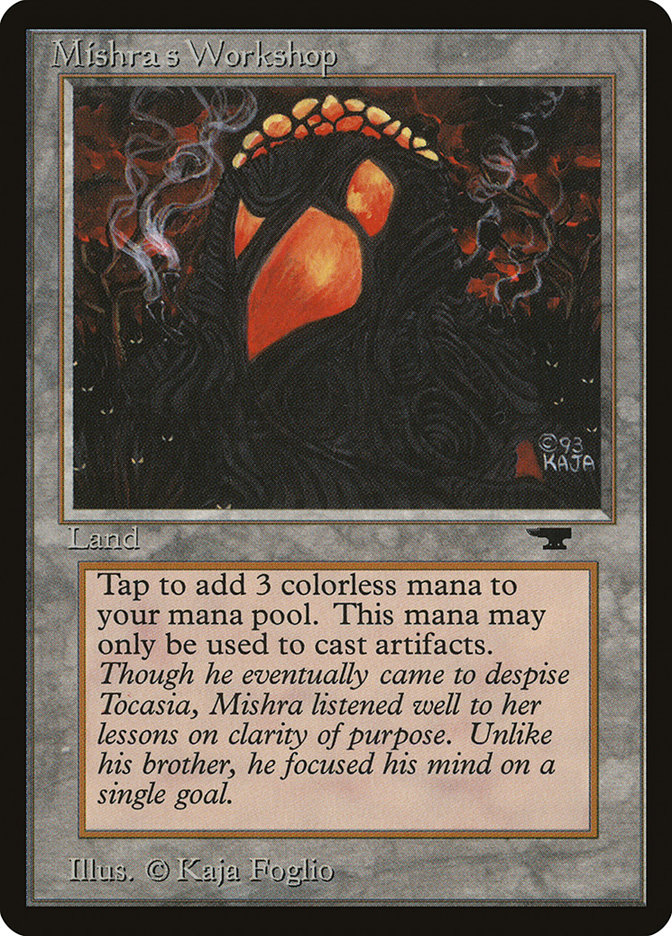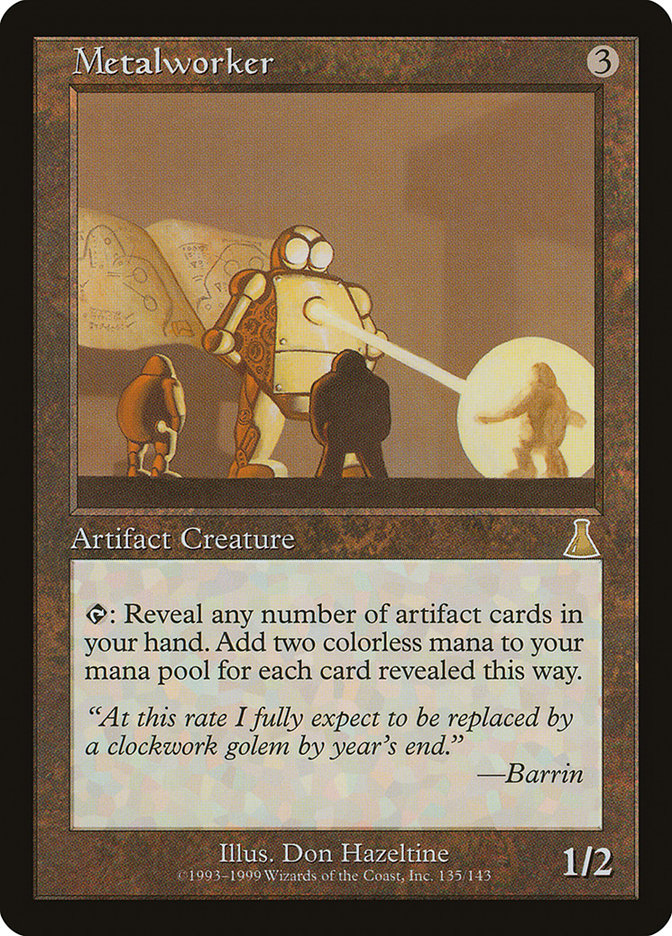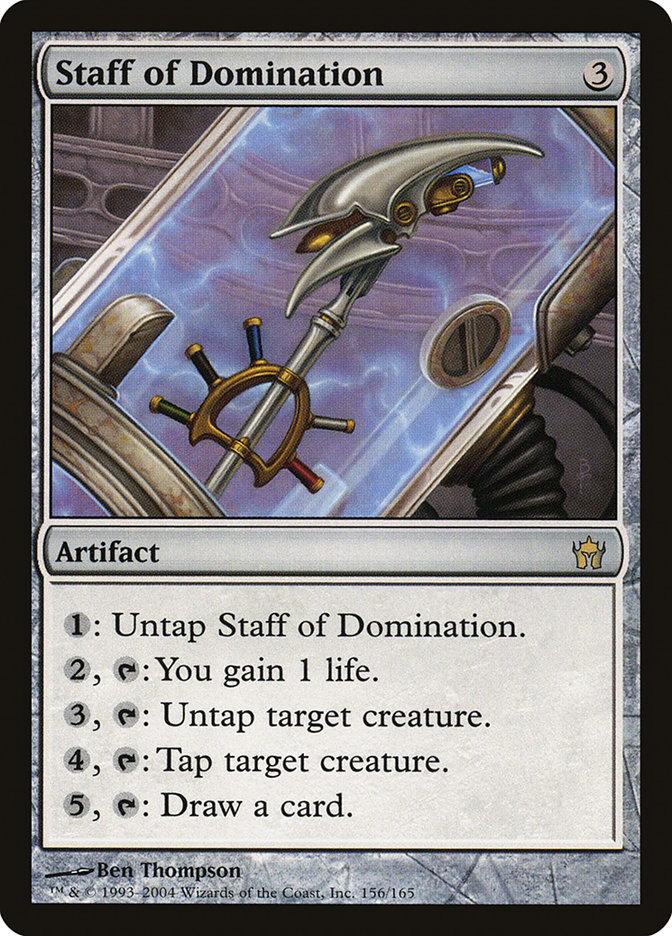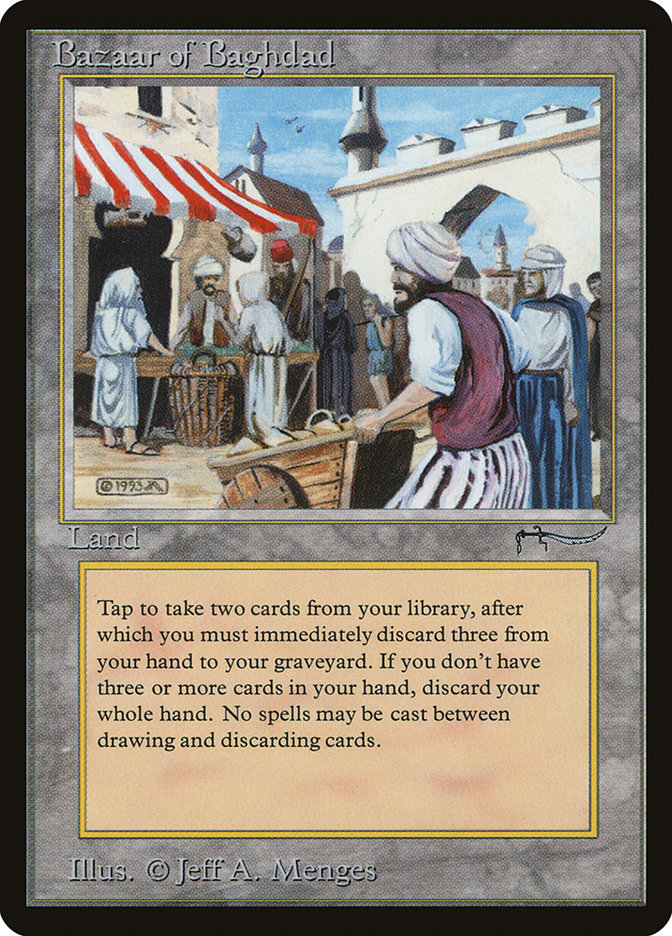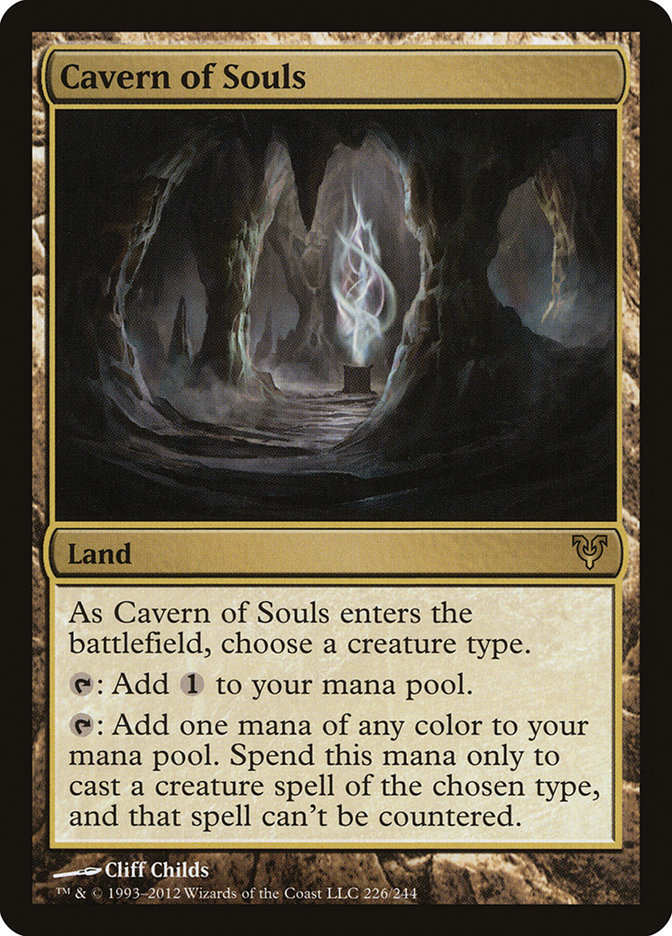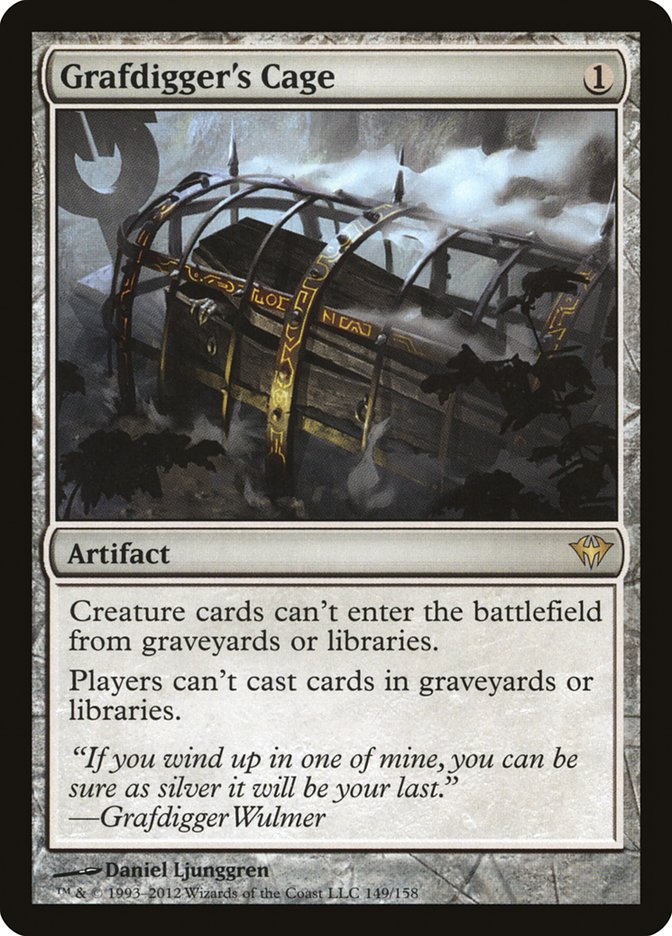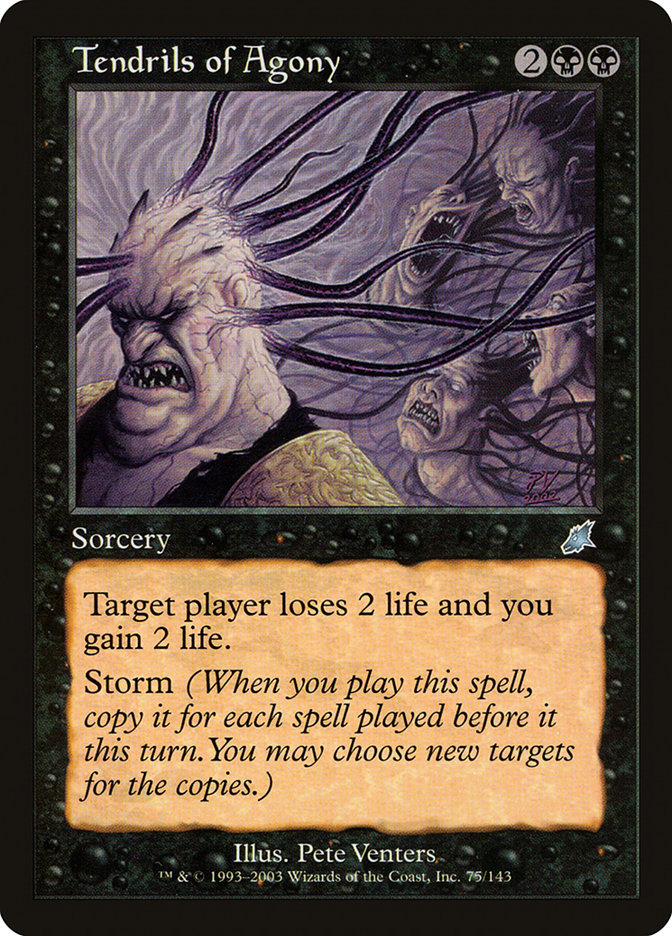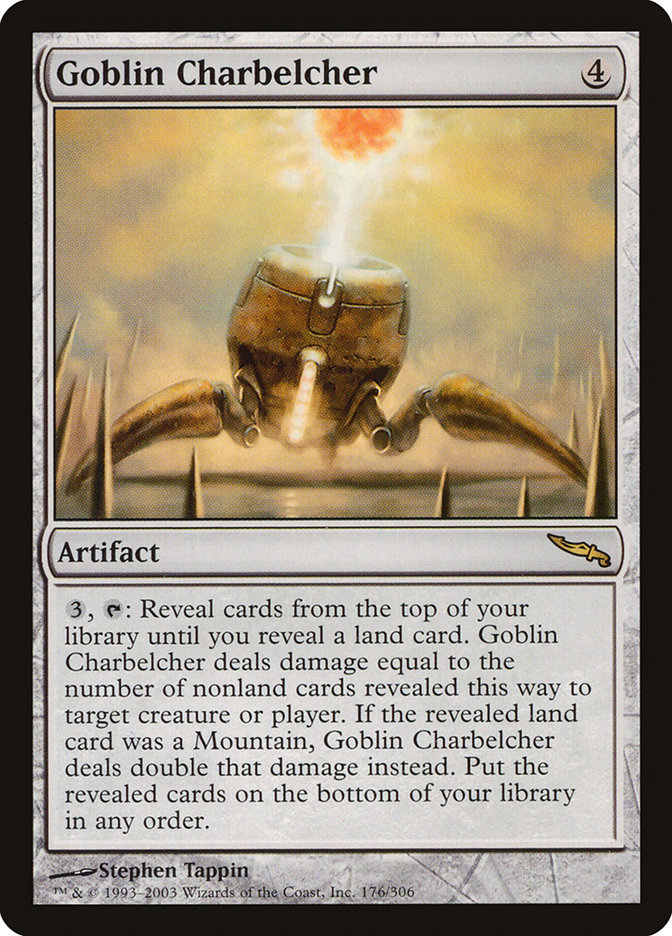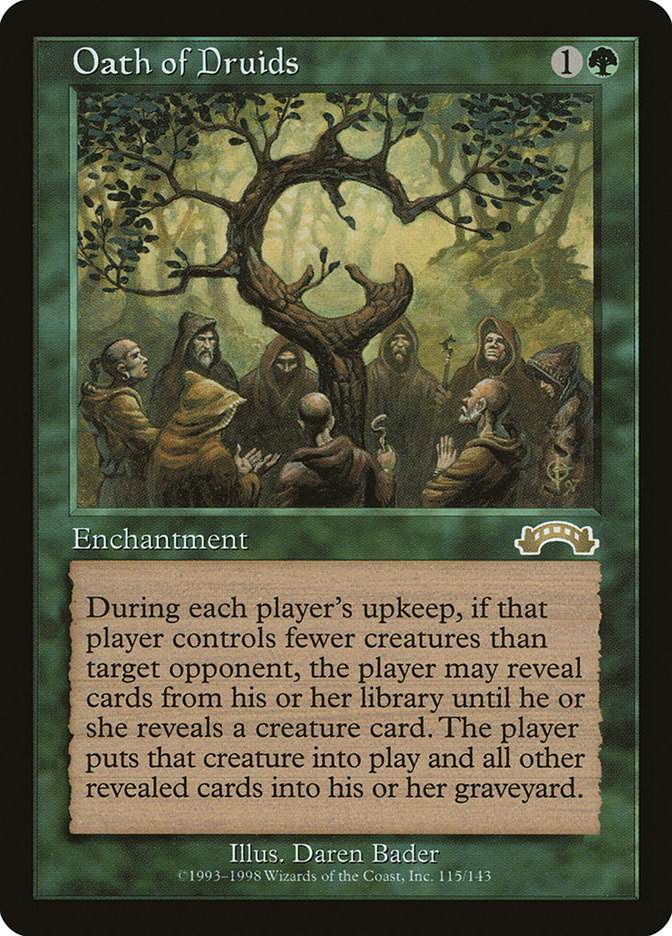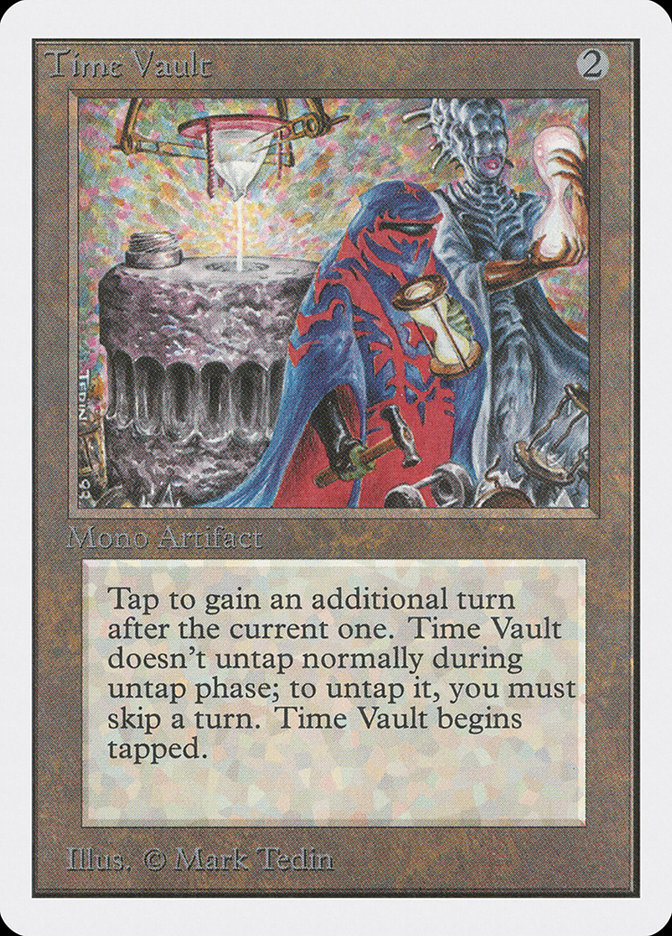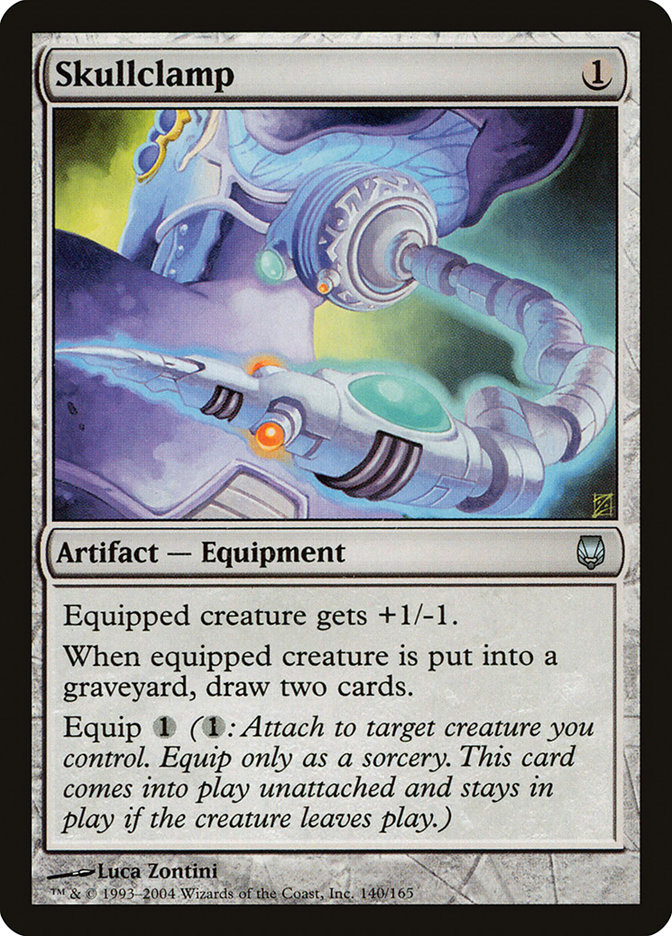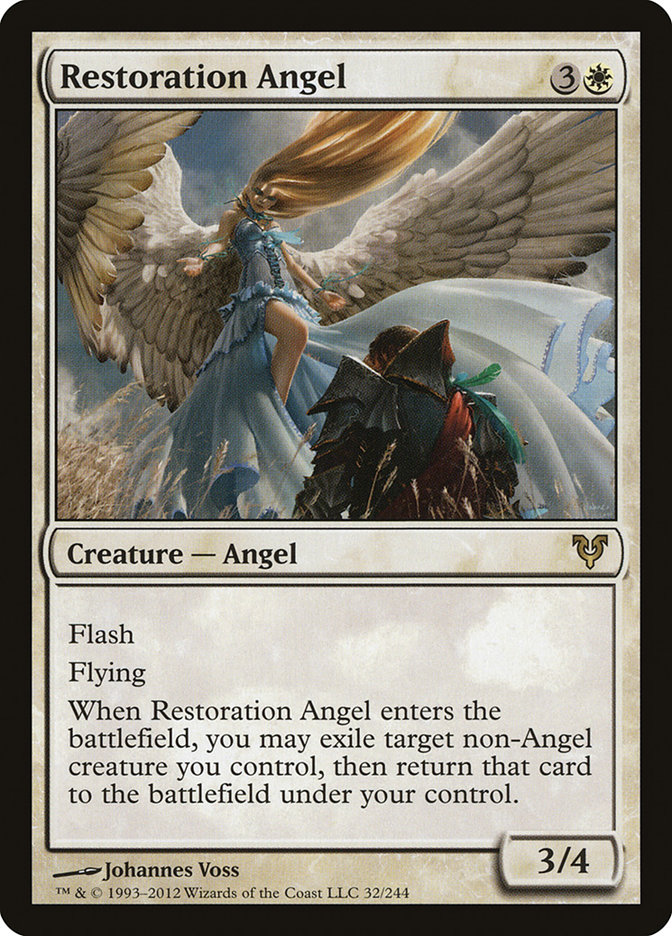One of the coolest attributes of Vintage as a format is that it’s an ongoing and open-ended history of the game of Magic. Vintage (or Type I as it’s still affectionately called by many of the old guard) has been a part of Magic for as long as tournaments have been a part of the game and will remain a part of the game for as long as it continues to exist.
Every year new cards are added to the already gigantic card pool, new decks are created, and old decks fall out of favor. Today’s article (my third annual installment of the Vintage Year In Reviewseries) will take a look back at the tournaments, champions, decks, and innovations that occurred in 2013 and recount how these events have changed the game.
January 2013
Since starting at the beginning seems as reasonable a place to start as any, let’s go back in time to a year ago January and take a look at what was going on in Vintage.
This time last year the big question was if the dominance of Workshop Prison decks would carry over from 2012 into 2013.
In 2012 Mishra’s Workshop MUD had put up dominant numbers that the archetype hadn’t enjoyed since the days when Trinisphere was unrestricted in Vintage. At the end of 2013, blue decks were adapting to fight Workshop in the form of permanent/land heavy-control decks like Bomberman and Landstill in order to push back against the Workshop menace.
This trend of blue decks bringing the hate for Mishra’s Workshop carried right into 2013 and was clearly evident in the Top 8 of the NEV Invitational.
The Top 8 was dominated by the presence of these land-heavy board-control style blue decks piloted by all the usual suspects of the time and place.
Check out all Top 8 decklists from the NEV Invitational here.
1st: Greg Fenton – Oath
2nd: Ray Robillard – U/W Landstill
3rd: Ryan Glackin – Dredge
4th: Josh Potucek – RUG Landstill
5th: Tom Dixon – Grixis Control
6th: Rob Edwards – Four-Color Control
7th: Josh Butker – Esper Wizards
8th, Justin Kohler – U/W Bomberman
One knows it’s a hateful world for Mishra’s Workshop when Ray Robillard is playing U/W Landstill!
The tournament was eventually taken down by Greg Fenton playing Oath of Druids. The biggest Vintage storyline for January was the dominance of Landstill and Bomberman decks in the metagame. Ray’s runner-up U/W Landstill deck from NEV is a very good indicator of just how hateful the metagame had evolved to be against Workshop decks.
Creatures (7)
Planeswalkers (3)
Lands (22)
Spells (28)

The deck has lots of lands, lots of permanents, and lots of ways between the maindeck and sideboard to fight against the Workshop decks that had been so dominant the previous year.
A great way to dominate the board against non-combo decks.
Stoneforge Mystic is a great way to fight against Mishra’s Workshop decks as well as the control mirror match since it produces a never-ending stream of 4/4 vigilant lifelinkers in the form of recurring uncounterable Batterskulls for a very small mana investment.
The deck also packs a bunch of counterspells, card draw, and of course:
A control deck’s best ally.
The Jace war at this time was very important in the metagame since most of the control decks played Jace but also couldn’t possibly beat a resolved and prolonged active Jace on the opponent’s side of the board.
Keep in mind that at this time last year the legend rule hadn’t been changed yet and it wasn’t possible to play your own Jace once they had a Jace in play. Remember the days of opponent plays Jace and Brainstorms, you play Jace to legend rule both Jaces, they play another Jace and Brainstorm again, misery and death?
The new legend rule is an all-around bright spot that came into being for tournament Magic in 2013 for sure!
February
If it was true that by February 2013 the metagame had evolved to be extremely hostile toward Mishra’s Workshop decks, it’s certain that the Midwest either didn’t get the memo or got it and ignored it altogether.
The February Team Serious Open was won and utterly dominated by the presence of all flavors of Mishra’s Workshop artifact decks. In the end, the trophy ended up going to well-known Mishra’s Workshop mad scientist and brew master extraordinaire Mark Trogdon.
Check out all the decklists from the Team Serious Open here.
1st: Mark Trogdon – Workshop Aggro
2nd: Jake Hilty – Enchantress
3rd: Charles Rolko – Espresso Stax
4th: Alec Copas – RUG Delver
5th: Sam Krohlow – Doomsday
6th: Nat Moes – Forgemaster Combo
7th: Eric Butler – Stoneforge Control
8th: Riley Curran – Elves!
Mark Trogdon has been playing Arcbound Ravager in Workshop decks to successful finishes since way before it was the "cool" thing to do, and here is yet another example of it in practice.
Creatures (25)
- 4 Metalworker
- 4 Triskelion
- 3 Arcbound Ravager
- 4 Lodestone Golem
- 2 Wurmcoil Engine
- 2 Kuldotha Forgemaster
- 2 Phyrexian Revoker
- 4 Phyrexian Metamorph
Lands (18)
Spells (17)

The basic principles of this deck:
Step 1: Make excessive amounts of mana.
Step 2: Use that mana to cast a ton of very powerful threats.
Step 3: Use your plentiful number of fatties to run rampant all over your opponent’s board!
Sometimes it pays dividends to go bigger, and all kinds of infinite is pretty darn big!
Mark’s deck also brought back the Metalworker + Staff of Domination combo in order to have an "ace in the hole" to simply combo off against decks where copious amounts of Triskelions and Wurmcoil Engines are not going to be very good.
And just because who doesn’t want to check out what a Vintage Enchantress deck looks like, let’s take a quick glance at Jake Hilty’s deck.
Creatures (12)
Lands (14)
Spells (34)

Go G/W! Go G/W!
March
Meanwhile on the other side of the world in Europe, the LCV group was making metagame breakthroughs that would end up shaping the worldwide metagame for months to come.
The Zombies won again!
Although the tournament was ultimately won by Jordi Carbonell playing Dredge, the Top 8 had a very high concentration of aggressive and disruptive blue creature decks. In fact, four of the Top 8 decks in the event were creature-based blue strategies.
Check out all the decklists from the Top 8 here.
1st: Jordi Carbonell – Dredge
2nd: Miquel Alcoriza – Talrand Gush
3rd: Eduardo Medrano – Noble Fish
4th: Antoni Sanchez – Tezzeret Control
5th: Francisco Javier Pina – U/R Control
6th: Toni Anaya – RUG Delver
7th: Carlos Minon – Midrange Bant
8th: Javi Rubio – BUG Loam
The deck that really interests me in this Top 8 is the BUG Loam deck because it’s really a proto-version of the BUG decks that would later come to be very significant metagame players more toward the middle of the year.
Creatures (12)
Planeswalkers (2)
Lands (17)
Spells (29)

The deck is basically a Deathrite Shaman + Wasteland + good stuff blue deck (which all the later iterations of BUG are), but we can see here that the card choices are not nearly as reined in and finely tuned as the deck would become later in the season. All of the important stuff is here though, and it still looks very much like a BUG deck.
No Bob?!
The deck is interesting because it foregoes playing Dark Confidant (a card that has become an auto-include in the later BUG decks) and instead opts to play Delver of Secrets and Gush. It’s interesting to look at older versions of decks to see what they looked like in their early stages of evolution. Obviously the typical proven BUG decks have tended to go in a different direction since this time, but this was certainly one way of building the deck that people were experimenting with earlier on last year.
April
Back in the States, the popularity and success of the Vintage creature deck was also on the rise when lots of different Fish decks found themselves playing for the title at the Player’s Guild Open. Ultimately the event was topped off by U/W enthusiast Justin Kohler playing Bomberman.
Looking back at the tournament, it’s clear that the hive mind seemed to be figuring out that in a field of slow blue control decks playing with aggressive creatures, card draw, and solid disruption ought to be a particularly well-positioned strategy. The Top 8 of the event shows some really interesting and innovative creature decks from early on in the 2013 Vintage creature renaissance.
Check out all of the decks from the Top 8 here.
1st: Justin Kohler – U/W Bomberman
2nd: Brian Kelly – Mayor Fish
3rd: Lance Ballester – U/W Bomberman
4th: Ryan Glackin – BUG Fish
5th: Jonathan Geras – Bant Fish
6th: Bill Sees – Bant Fish
7th: James Krushka – Martello Shops
8th: Ryan Bergeman – U/W Landstill
The new battle line for the metagame at this point in 2013 really seems to be U/W Control vs. creature decks.
One particularly innovative creature deck from this event was Brian Kelly’s runner-up "Mayor Fish" deck, which is essentially a disruptive Human tribal beatdown deck.
Vintage playable.
Creatures (23)
- 1 Devout Witness
- 3 Meddling Mage
- 4 Dark Confidant
- 4 Noble Hierarch
- 1 Stoneforge Mystic
- 3 Fiend Hunter
- 3 Mayor of Avabruck
- 4 Thalia, Guardian of Thraben
Lands (22)
Spells (15)

Four—count them—four Cavern of Souls in this deck.
You aren’t countering my Humans!
Cavern of Souls provides creature decks with a very solid way to resolve their creatures against the slow blue decks that rely heavily on their permission to curtail opposing decks from getting their cards into play.
Making Vintage safe for Fishes to run amok.
The one-two punch of Grafdigger’s Cage and Cavern of Souls (which were printed the year before) really began to get properly utilized early on in 2013 and is one of the big reasons that Fish style decks began to have sustained success as the year moved on.
May
As the creature renaissance was taking place, another revival was also underway in Vintage. With Workshop decks struggling to stay above water in a global metagame that had become increasingly hateful towards artifact decks because of the predominance of blue board control and now creature decks:
We heard people are playing fair decks?
Combo finally came back to Vintage!
The Twaun Team Serious Open is a very extreme example of combo enthusiasts seizing a weak moment for Mishra’s Workshop and making the most of it by going really broken.
Check out all of the Top 8 decklists here.
1st: Mike Solymossy – Burning Oath
2nd: Jimmy McCarthy – Burning Oath
3rd: Sam Krohlow – Belcher
4th: Charles Rolko – Grixis Control
5th: Randall Withrell – Belcher
6th: Jacob Hilty – Hate Bears
7th: Eric Butler – U/W Fish
8th: Nam Tran – Espresso Stax
Four of the top five spots in this Top 8 were taken up by all-in busted combo decks!
Creatures (2)
Lands (12)
Spells (46)
- 1 Brainstorm
- 1 Yawgmoth's Bargain
- 1 Vampiric Tutor
- 1 Mystical Tutor
- 4 Oath of Druids
- 4 Duress
- 1 Necropotence
- 1 Mana Vault
- 1 Wheel of Fortune
- 1 Sol Ring
- 1 Demonic Tutor
- 1 Hurkyl's Recall
- 1 Time Walk
- 4 Dark Ritual
- 1 Ancestral Recall
- 1 Mana Crypt
- 1 Timetwister
- 4 Burning Wish
- 1 Mind's Desire
- 1 Memory Jar
- 1 Tinker
- 1 Rebuild
- 1 Black Lotus
- 1 Lion's Eye Diamond
- 1 Mox Emerald
- 1 Mox Jet
- 1 Mox Pearl
- 1 Mox Ruby
- 1 Mox Sapphire
- 2 Chrome Mox
- 1 Ponder
- 1 Thoughtseize
- 1 Mox Opal

The Salad got himself a victory playing Smennen’s innovative new weapon Burning Oath. The Burning Oath deck is essentially a Long.dec that replaces some of the cards that have since been restricted with Oath of Druids, Griselbrand, and Forbidden Orchard.
People are playing with creatures again?!
The Burning Oath deck was an important deck to emerge on the scene in 2013 because it really brought combo decks back to being a premier strategy in Vintage. Since the deck contains Oath of Druids and lots of ways to power it out, Burning Oath actually has a pretty reasonable game plan for beating Workshop decks. The high density of broken spells and extremely consistent fast kills would ultimately provide for the deck to become a Top 8 mainstay during the middle of 2013.
Meanwhile, in May one of the biggest Vintage tournaments ever also took place in Europe: the Bazaar of Moxen Vintage tournament.
The Bazaar of Moxen is a gigantic Eternal event where tons of Vintage and Legacy players compete for fantastic prizes playing their favorite old formats. The Bazaar of Moxen was won by Amadeus Kurz playing his innovative BUG Fish deck, a deck that would quickly take the format by force due to its resiliency and powerful threats.
Check out all of the Vintage Bazaar of Moxen decklists here.
1st: Amadeus Kurz – BUG Fish
2nd: Antonio Musarra – MUD
3rd: Alexis Catelain – MUD
4th: Juan Garcia Parsillo – U/W Bomberman
5th: Marcel Gelissen – Kuldotha MUD
6th: Carsten Linden – Grixis Control
7th: Pavel Vladic – Grixis Control
8th: Alex Delgado – U/W Landstill
The gigantic Vintage event was finally won by BUG Fish.
Creatures (16)
Lands (17)
Spells (27)
- 1 Brainstorm
- 1 Vampiric Tutor
- 4 Force of Will
- 1 Demonic Tutor
- 1 Time Walk
- 1 Ancestral Recall
- 1 Null Rod
- 1 Black Lotus
- 1 Mox Emerald
- 1 Mox Jet
- 1 Mox Sapphire
- 2 Spell Pierce
- 2 Steel Sabotage
- 3 Mental Misstep
- 2 Flusterstorm
- 4 Abrupt Decay
Sideboard

The deck really takes advantage of some important Return to Ravnica printings:
Whoever said RTR wouldn’t impact Vintage was wrong.
It’s the epitome of very efficient threats, mana denial, and cheap efficient answers. The card Deathrite Shaman provides the deck with tons of versatility and really makes the deck run.
We also see in this Top 8 that the most powerful decks in the format all seemed to have floated to the top to make Top 8. The Top 8 has lots of Workshops, U/W Control, and Grixis Control.
June
Summer is the biggest season for Vintage play because many of the largest and most high-profile events take place during it. The summer of 2013 certainly didn’t disappoint, as there were several awesome large-scale events and of course tons of really interesting decks.
One of the big events from early summer 2013 was the N.Y.S.E. Open, where players competed for a ton of sweet prizes. Paul Mastriano ended up taking this tournament down and claiming the first prize of Black Lotus.
Check out all the Top 8 decklists here.
1st: Paul Mastriano – Suicide Jace Vault
2nd: Lance Ballester – U/R Control
3rd: John Grudzina – RUG Delver
4th: Josh Potucek – RUG Landstill
5th: Adrian Becker – Workshop Affinity
6th: Mike Egan – Blue Angels
7th: Craig Berry – Blue Angels
8th: Bryce Menard – Burning Oath
I wrote an entire article on Paul Mastriano’s Suicide Jace Vault deck, which can be found here.
Everybody be calm! Time Vault is still good.
Two really innovative and important decks to come out of this tournament were Workshop Affinity and Blue Angels. Both decks have proved that they have the staying power make a splash in Vintage as well as maintain a sustained presence in the metagame.
The Workshop Affinity deck is different from other Workshop decks that had been popular before in that it plays a lot of cheap threats and tries to attack quickly. The idea is solid, especially at a point in the metagame where lots of blue creature decks and high land-count control decks were being played.
The strategy is to just play a lot of threats, with the emphasis being on playing more than one threat per turn to simply overwhelm blue players with threats on the board.
Creatures (25)
- 4 Arcbound Ravager
- 3 Frogmite
- 4 Lodestone Golem
- 2 Steel Overseer
- 4 Memnite
- 4 Phyrexian Revoker
- 4 Signal Pest
Lands (13)
Spells (22)

Vintage finally gets a good Skullclamp deck.
The deck is basically just an Affinity deck that gets to play with Lodestone Golem, Moxes, and Mishra’s Workshop. Workshop Affinity focuses on overwhelming the opponent with cheap but powerful threats and attacking for large chunks of damage rather than trying to prison lock the opponent out of the game with Sphere effects (as had traditionally been the strategy for many Shop decks).
When I talked to Paul after the tournament, I remember that he was really impressed with the deck (as was I), and I remember him saying that he was pretty fortunate to beat it in the Top 8.
The emergence of Workshop Affinity as a metagame player further attacks traditional Workshop Prison decks from yet another angle. It’s basically a Shop deck that instead of having Spheres (which are dead draws in the mirror) is just loaded up with more threats. Traditional Workshop decks now had yet another bad match up lurking in the metagame!
The other deck to break out of this tournament was Blue Angels.
Creatures (10)
Planeswalkers (3)
Lands (16)
Spells (32)
- 1 Sensei's Divining Top
- 1 Brainstorm
- 3 Mana Drain
- 4 Force of Will
- 1 Sol Ring
- 1 Time Walk
- 1 Ancestral Recall
- 1 Mana Crypt
- 1 Thirst for Knowledge
- 1 Black Lotus
- 1 Mox Emerald
- 1 Mox Jet
- 1 Mox Pearl
- 1 Mox Ruby
- 1 Mox Sapphire
- 1 Engineered Explosives
- 1 Pithing Needle
- 3 Spell Snare
- 1 Steel Sabotage
- 3 Mental Misstep
- 2 Flusterstorm
- 1 Grafdigger's Cage

Blue Angels is an evolution of the Bomberman strategy that replaces the Auriok Salvager combo with Restoration Angel (which synergizes nicely with Trinket Mage and Vendilion Clique).
An upgrade to Salvager?
I was initially skeptical about Restoration Angel being a Vintage playable card, but I’ll admit that the deck has put up some nice finishes over the second half of the year. While it’s certainly true that I probably will never sleeve up a Restoration Angel for Vintage play, one can’t really argue with results!
And thus comes to an end the first part of my 2013 Vintage Year In Review. Tune in next week same time same place here on SCG for July-December!

